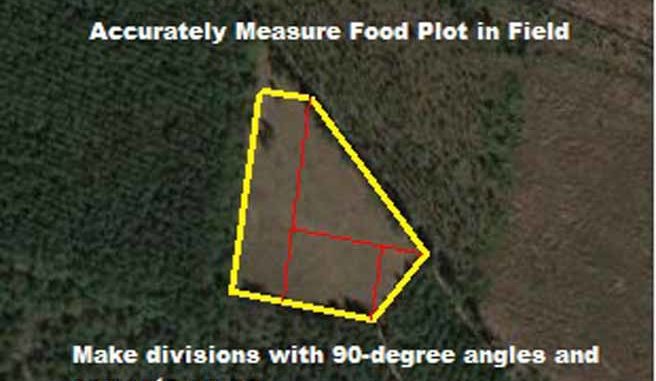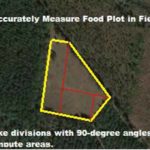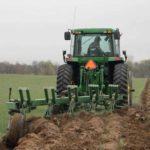
Measure food plots correctly, study seed depth
The spring planting season brings a heightened level of responsibility for the person in charge of producing top-quality, warm-season food plots. Deer, turkey and other wildlife benefit immensely from well-prepared plots with high yields. Food plots offer nutrition for deer and turkeys and their new arrivals, as fawns and poults are born and raised in the spring and early summer. But many food plots that don’t get off to a good start will quickly falter, resulting in poor performance and lack of use by targeted species, and that equates to wasted money and loss of benefits for wildlife.
Hunters and land managers with the ability to follow directions can avoid the most-common mishaps, such as: avoiding soil tests, failure to correct pH with lime, improper fertilizer application, planting the wrong seed, controlling weeds effectively, planting without necessary soil moisture and improper seeding techniques. While it’s important to avoid these mistakes, there are several others that many amateurs and professionals overlook that come crashing down when it’s too late.
The No. 1 mistake is not accurately measuring the acreage in a food plot. While some food plots are rectangular, many offer an irregular configuration that creates much-needed edge but make it difficult to figure its true size. In these cases, incorrect estimates can lead to major issues down the road.
Every aspect of a food plot’s preparation and maintenance is based on area measurement. From herbicide, fertilizer and lime applications to the seeding rate, accurate measurement can be the difference between a successful plot and a complete failure. While variations in fertilizer and lime applications are acceptable with an estimated acreage, improper application of pre-emergent and post-emergent herbicide can be destructive, costly or not have any of the targeted affects.
Measuring a plot’s area is easy. The best way is by using a GPS unit to map the area, but the old- fashioned way, following basic geometry, will also suffice. Areas of triangles and rectangles covered in 10th-grade math are all that’s needed to compute a correct area. Start by tracing the boundaries of the food plot from an aerial photo and then transfer to a clean piece of paper. Then, accurate measurements can be taken on the ground with a measuring wheel, making sure to include multiple widths and lengths where possible. After all measurements are recorded on the sketch, break each area into rectangles and triangles to compute all areas and add up to obtain a total. Remember, 43,560 square feet comprise an acre. When total square footage is obtained, divide by 43,560 to produce an acreage calculation.
Directly tied to acreage is the seeding rate, the second most-common misconception, often overlooked in growing a beautiful and lush food plot. Planting more is not always the best route. In fact, overcrowding seed is one of the worst things a food-plot planter can make. Plants require sunlight, nutrients and water not just to survive, but to thrive. Heavy seeding rates ration available resources, causing stunted growth. Even though more fertilizer can be applied, there is only a limited amount of space for roots to spread and for greenery to capture critical sunlight for photosynthesis. Overcrowding seeds is a plot killer because low outcomes will result instead of a viable crop.
While over-seeding is the most-common misconception, under-seeding can be a problem. No doubt, when fewer plants exist, more available resources can be utilized for growth. However, when too much space is left open, the soil loaded with nutrients is subject to weed colonization. Having a full crop planting will help prevent non-target species from colonizing. Knowing the correct plot area is critical information for applying the correct seeding rate.
Finally, seeding depth is another critical component that is often not done correctly. It’s easy to watch how deep a disk harrow or plow descends into the dirt, but the actual seeding depth is much less than the depth of disturbance. It’s not like planting tomatoes in the family garden where deep planting below 12 inches is preferred.
Generally, food-plot seeds should be planted on the shallow side to get successful germination and growth. However, seeds that need more depth can have problems during periods of drought if they’re planted too shallow, and they can be affected negatively when large plants tower above the ground. The seeds of corn, soybeans and chufa are large and require a little extra depth to root efficiently. Planting depths between 11/2 and 2 inches are preferred. Peanuts are root vegetables that require depths between 3 and 5 inches to thrive.
Most other food-plot seed varieties are noticeably smaller. Plants such as clovers, wheat, oats, rye and peas have tiny seeds and require shallow planting depths between ½- to 1/8-inch below the surface.
Placing seeds at the right depth is critical to the success of a plot. For the best guidance, check the seed label for a depth recommendation specific to the type of soil in which the plot will be planted.






Be the first to comment